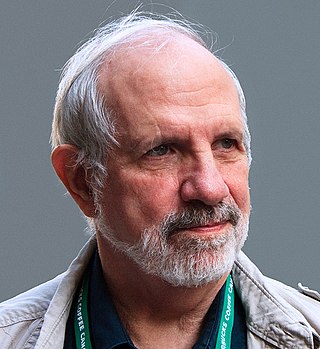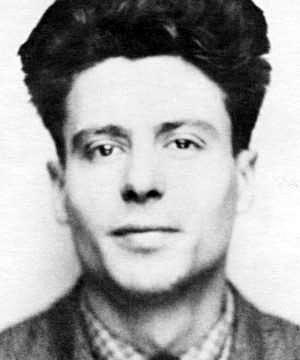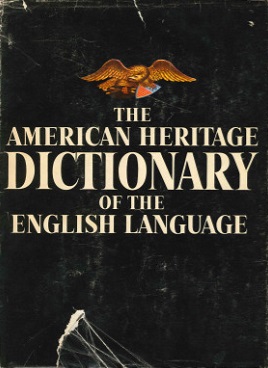
Brian Russell De Palma is an American film director and screenwriter. With a career spanning over 50 years, he is best known for work in the suspense, crime and psychological thriller genres. De Palma was a leading member of the New Hollywood generation.

The Best Years of Our Lives is a 1946 American drama film directed by William Wyler and starring Myrna Loy, Fredric March, Dana Andrews, Teresa Wright, Virginia Mayo and Harold Russell. The film is about three United States servicemen re-adjusting to societal changes and civilian life after coming home from World War II. The three men come from different services with different ranks that do not correspond with their civilian social class backgrounds. It is one of the earliest films to address issues encountered by returning veterans in the post World War II era.

Paul Muni was an American stage and film actor from Chicago. He started his acting career in the Yiddish theater and during the 1930s, he was considered one of the most prestigious actors at the Warner Bros. studio and was given the rare privilege of choosing his own parts.

Alain Resnais was a French film director and screenwriter whose career extended over more than six decades. After training as a film editor in the mid-1940s, he went on to direct short films including Night and Fog (1956), an influential documentary about the Nazi concentration camps.

Jean Vigo was a French film director who helped establish poetic realism in film in the 1930s. His work influenced French New Wave cinema of the late 1950s and early 1960s.

Hoagland Howard "Hoagy" Carmichael was an American musician, composer, songwriter, actor, author and lawyer. Carmichael was one of the most successful Tin Pan Alley songwriters of the 1930s and 1940s, and was among the first singer-songwriters in the age of mass media to utilize new communication technologies such as old-time radio broadcasts, television, microphones, and sound recordings.

The American Heritage Dictionary of the English Language (AHD) is a dictionary of American English published by HarperCollins. It is currently in its fifth edition.
Kyril Bonfiglioli was a British art dealer, magazine editor and comic novelist. His eccentric and witty Mortdecai novels have gained a following since his death.

David Thomson is a British film critic and historian based in the United States, and the author of more than 20 books.

Kevin Brownlow is a British film historian, television documentary-maker, filmmaker, author, and film editor. He is best known for his work documenting the history of the silent era, having become interested in silent film at the age of eleven. This interest grew into a career spent documenting and restoring film. Brownlow has rescued many silent films and their history. His initiative in interviewing many largely forgotten, elderly film pioneers in the 1960s and 1970s preserved a legacy of early mass-entertainment cinema. He received an Academy Honorary Award at the 2nd Annual Governors Awards given by the Academy of Motion Picture Arts and Sciences on 13 November 2010. This was the first occasion on which an Academy Honorary Award was given to a film preservationist.

The Monthly Film Bulletin was a periodical of the British Film Institute published monthly from February 1934 until April 1991, when it merged with Sight & Sound. It reviewed all films on release in the United Kingdom, including those with a narrow arthouse release.

Michael is a 1924 German silent drama film directed by Carl Theodor Dreyer, director of other notable silents such as The Passion of Joan of Arc (1928), Master of the House (1925), and Leaves from Satan's Book (1921). The film stars Walter Slezak as the titular Michael, the young assistant and model to the artist Claude Zoret. Along with Different from the Others (1919) and Sex in Chains (1928), Michael is widely considered a landmark in gay silent cinema.
Brian Lester Glanville is an English football writer and novelist. He was described by The Times as "the doyen of football writers—arguably the finest football writer of his—or any other—generation", and by American journalist Paul Zimmerman as "the greatest football writer of all time."

Edgar Austin Mittelholzer was a Guyanese novelist. He is the earliest professional novelist from the English-speaking Caribbean. He was able to develop a readership in Europe and North America, as well as the Caribbean; and established himself in London, where he lived almost exclusively by writing fiction. He is considered "the most prolific novelist to be produced by the Caribbean".

Fredric John Warburg was a British publisher, who in 1935 founded the company Secker & Warburg. He is best known for his association with the author George Orwell. During a career spanning a large part of the 20th century and ending in 1971, Warburg published Orwell's major books Animal Farm (1945) and Nineteen Eighty-Four (1949), as well as works by other leading figures such as Thomas Mann and Franz Kafka. Other notable publications included The Third Eye by Lobsang Rampa, Pierre Boulle's The Bridge over the River Kwai, Adolf Hitler's Mein Kampf and William Shirer's The Rise and Fall of the Third Reich.
Ephraim Katz was a writer, journalist and filmmaker who devoted his life to gathering the information in his book, The Film Encyclopedia, first published in 1979.
Voyage to Cythera is a 1984 Greek film directed by Theodoros Angelopoulos. It was entered into the 1984 Cannes Film Festival, where it won the FIPRESCI Prize and the award for Best Screenplay.

The bibliography of George Orwell includes journalism, essays, novels, and non-fiction books written by the British writer Eric Blair (1903–1950), either under his own name or, more usually, under his pen name George Orwell. Orwell was a prolific writer on topics related to contemporary English society and literary criticism, who has been declared "perhaps the 20th century's best chronicler of English culture." His non-fiction cultural and political criticism constitutes the majority of his work, but Orwell also wrote in several genres of fictional literature.

Disorder and Early Sorrow is a 1925 novella written by Thomas Mann. It follows the fortunes of the Cornelius family through the perspective of Abel Cornelius, a 47-year-old history professor at the local university, whose status in society was once highly respected but has diminished markedly. The Cornelius family is, in part, a reflection of Mann's own family. The novella explores the psychological and social impact of the Weimar hyperinflation. It first appeared in 1925 in a Festschrift celebrating Mann's 50th birthday in the publication Neue Rundschau. It first appeared in English in The Dial in two installments in 1926. As an individual book, it was published in an English translation by Helen Tracy Lowe-Porter in 1929 and in one by Herman George Scheffauer in 1930. It was translated in 2023 by Damion Searls as "Chaotic World and Childhood Sorrow".
John Banville is an Irish novelist, short story writer, adapter of dramas and screenwriter. He has won the Booker Prize, the James Tait Black Memorial Prize, the Franz Kafka Prize, the Austrian State Prize for European Literature and the Prince of Asturias Award for Literature; has been elected a Fellow of the Royal Society of Literature; knighted by Italy; is one of the most acclaimed writers in the English language.















